What the experience of today’s first-year students can teach us about recruitment
Remember your first year of college? The excitement, the nerves, and maybe even doubts about whether you’d made the right choice?
This transition has always been uncertain, but for today’s students who came of age during the pandemic, it’s especially anxiety-provoking. They’re often less prepared to navigate the college search and matriculation processes and less convinced of the value of college than previous generations were.
These ideas have been on my mind lately as I’ve reviewed the results of EAB’s latest First-Year-Experience Survey, in which we asked over 12,500 current first-year students about their college search and experiences on campus thus far. Their responses were highly informative for recruitment strategy—and sometimes surprising.
Here are some the top takeaways for enrollment teams.
Explore the Full Insight Paper
Students are seeking a sense of belonging in college—and finding it to varying degrees.
Over the 9 years that we’ve tracked first-year satisfaction in college with this survey, the most dramatic changes occurred (unsurprisingly) during the pandemic, when satisfaction levels dropped significantly. Our 2022 and 2024 data has shown a rebound, with 84% of students overall saying they’re satisfied with their experience thus far.
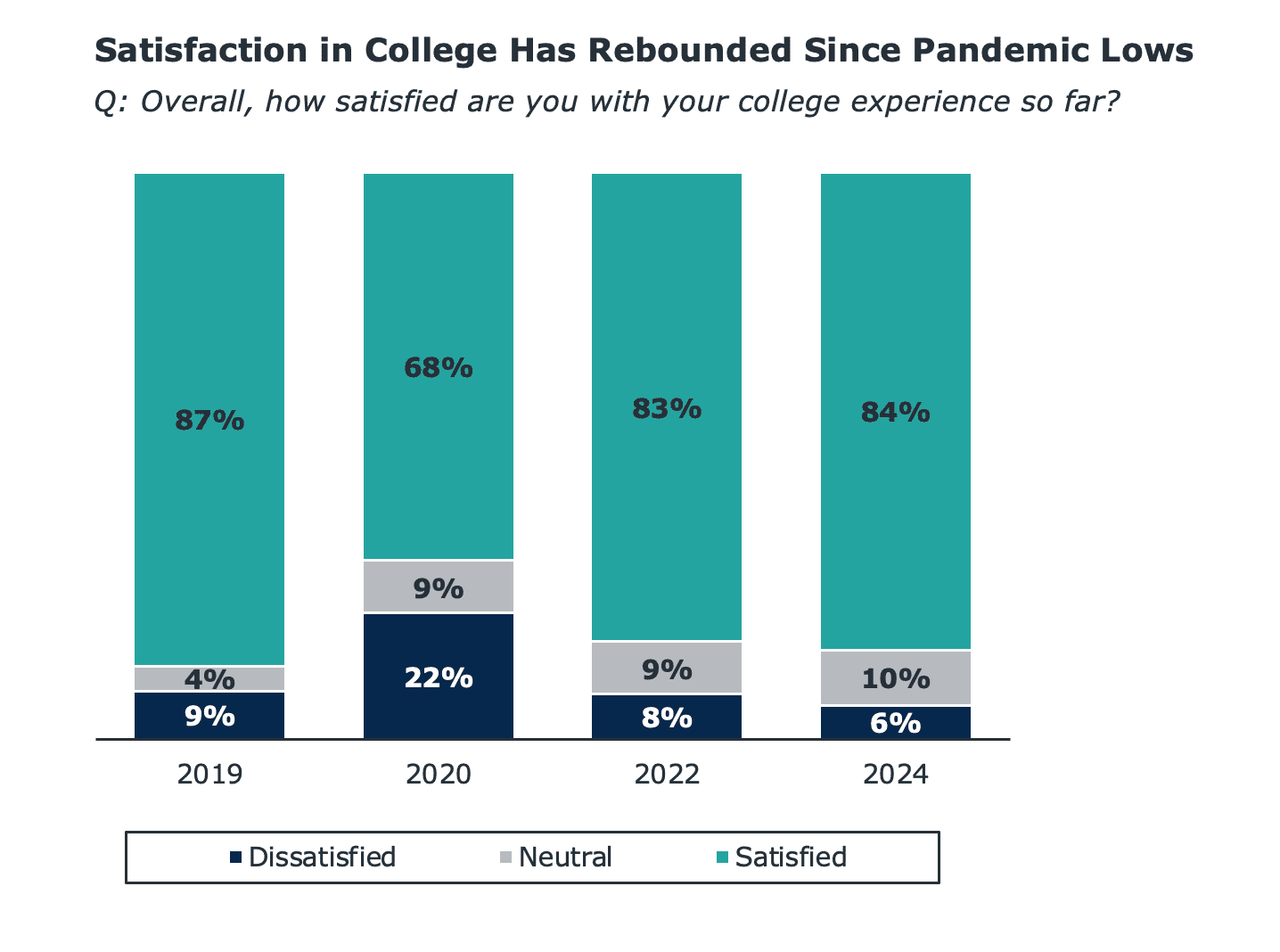
While the overall picture appears positive, when you break responses down by race/ethnicity and household income, the story gets more complicated. Higher-income students were significantly more likely to be satisfied with their college experience than were lower-income students. And students of color, particularly Black students, were generally less satisfied than White students. We found that sense of belonging was highly correlated with overall levels of satisfaction, with White students more likely to cite belonging as a source of their college satisfaction than students of color were.
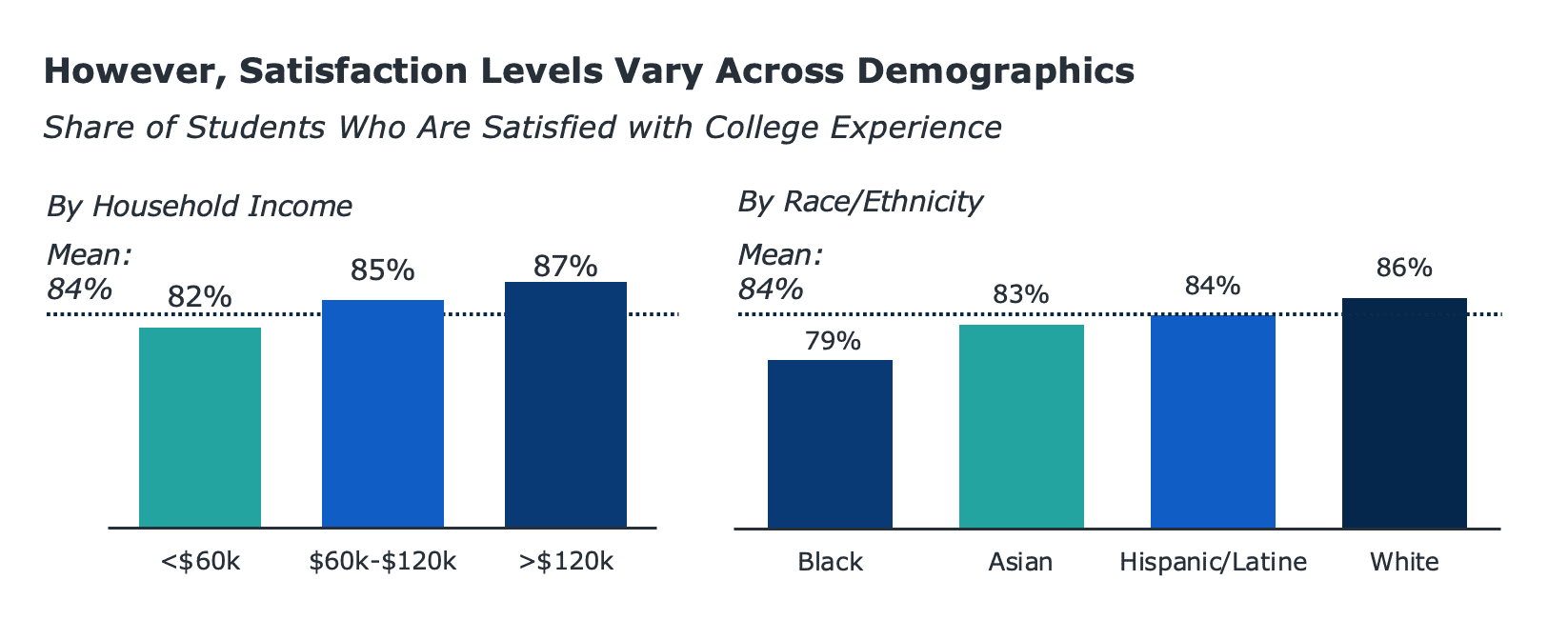
To further understand belonging, we asked students whether they had experienced any targeting, criticism, or exclusion since beginning college. Somewhat worryingly, about one in three students reported feeling targeted, criticized, or excluded based on their identity. Nonbinary students reported these experiences in especially high numbers (51%), citing discrimination based on gender, sexual orientation, and mental health. Students from historically underrepresented groups, including first-generation college, low-income, and Black students, were also slightly more likely to experience harassment than the mean.

Mental health concerns continue to shape college choice.
Mental health support is another factor that contributes to sense of belonging and satisfaction in college. As we’ve been tracking closely, the pandemic exacerbated students’ mental health challenges, and our new survey data shows how this focus on mental health has changed perceptions of college.
For example, when we asked students to identify the factors that define a “safe” campus, 61% named “support for mental health and well-being.” This association was stronger among lower-income students, with “support for mental health and wellbeing” being the most frequently named “safety” factor for students with a household income of less than $60k, above factors including helpful campus police and low crime.

EAB’s recent survey with Joon shows that support for mental health is not just a concern of current students, but also a factor in college choice, especially for specific student populations. As the chart below shows, the overall survey population named support for mental health as moderately important in their college decision (a 3.20 out of 5, with 5 being “extremely important”). Non-male students, first-generation college students, and lower-income students tend to rank support for mental health as more important within their college decision than their counterparts do. This suggests that while mental health concerns remain high among all students, they play a larger role in decision-making for many historically underrepresented groups.
For more on this topic, read our report “Mental Health’s Role in College Decision-Making”
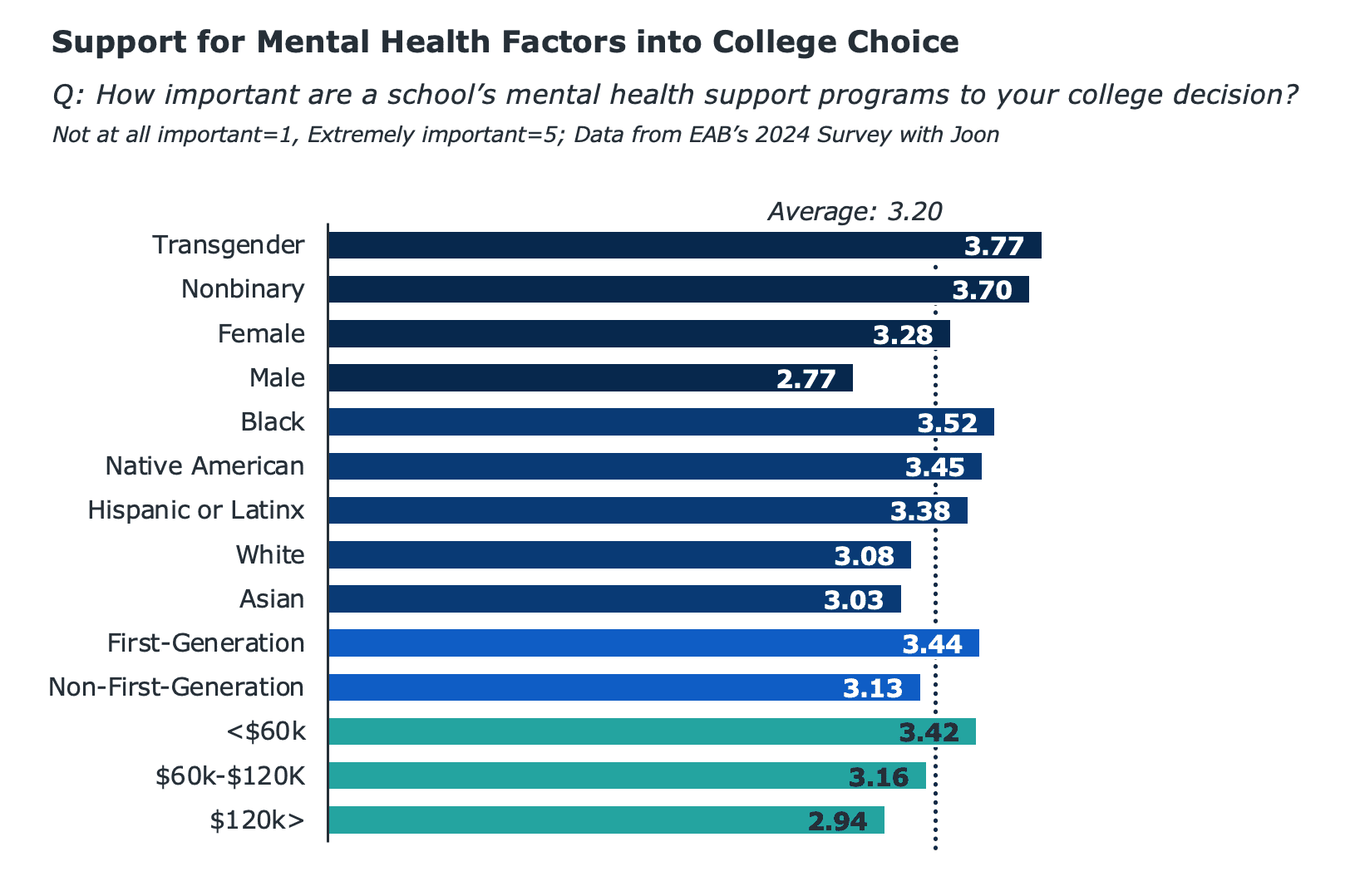
Affordability worries have intensified.
Not only do mental health challenges play a major role in students’ satisfaction in college, but they also impact how and whether students choose a college. Within our survey population, the percentage of students opting out of college has increased steadily since 2015 for a variety of reasons, including worries about mental health, with 23% of students in 2024 citing they were “not mentally ready” for college.
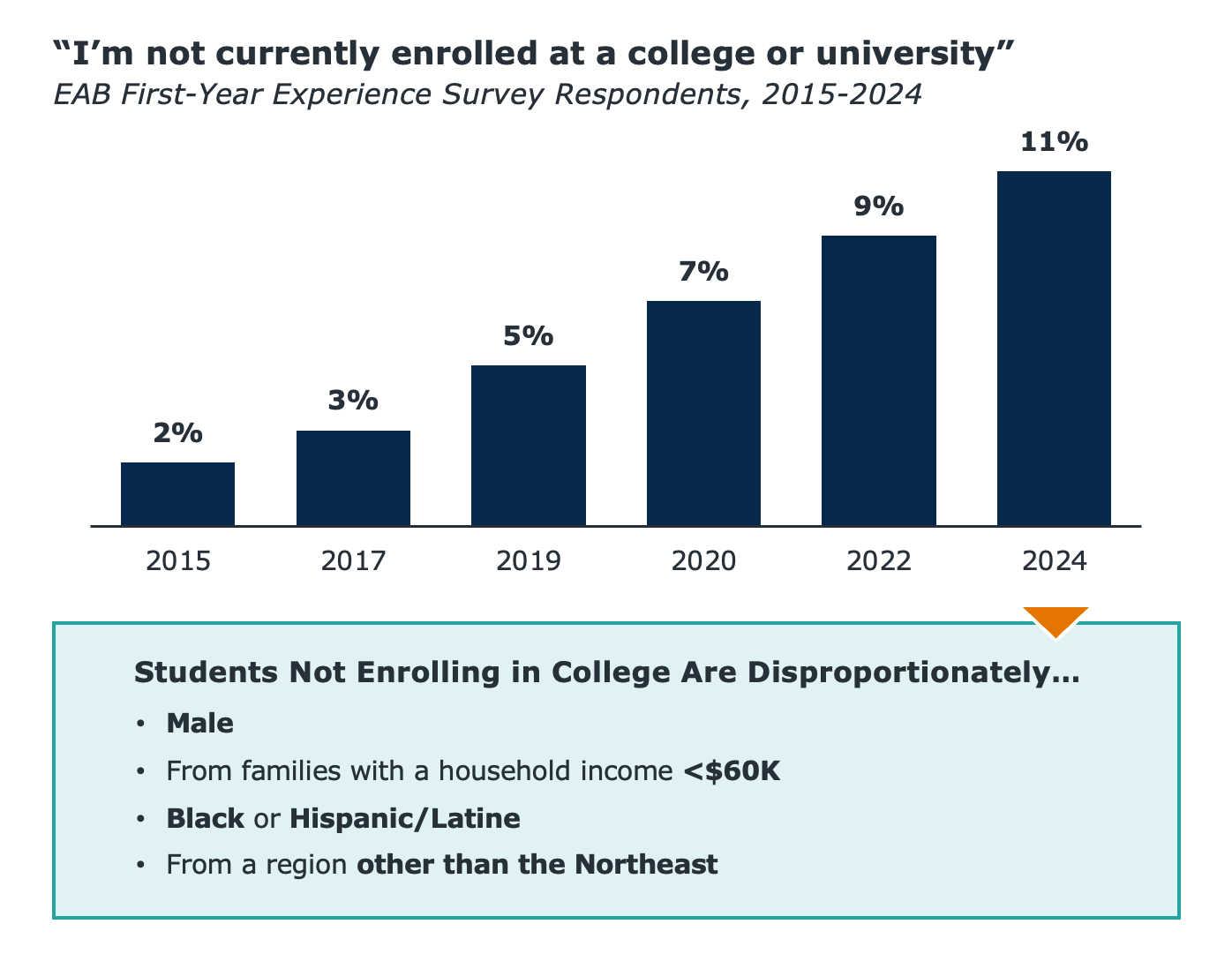
Affordability concerns were another top reason, named by 28% of students not attending college. As the chart below shows, more students opted out in 2024 than in 2022 because of affordability concerns, while fewer students cited doubts about the value of college. Students also cited taking time off, joining the military, or taking a gap year as reasons for opting out.
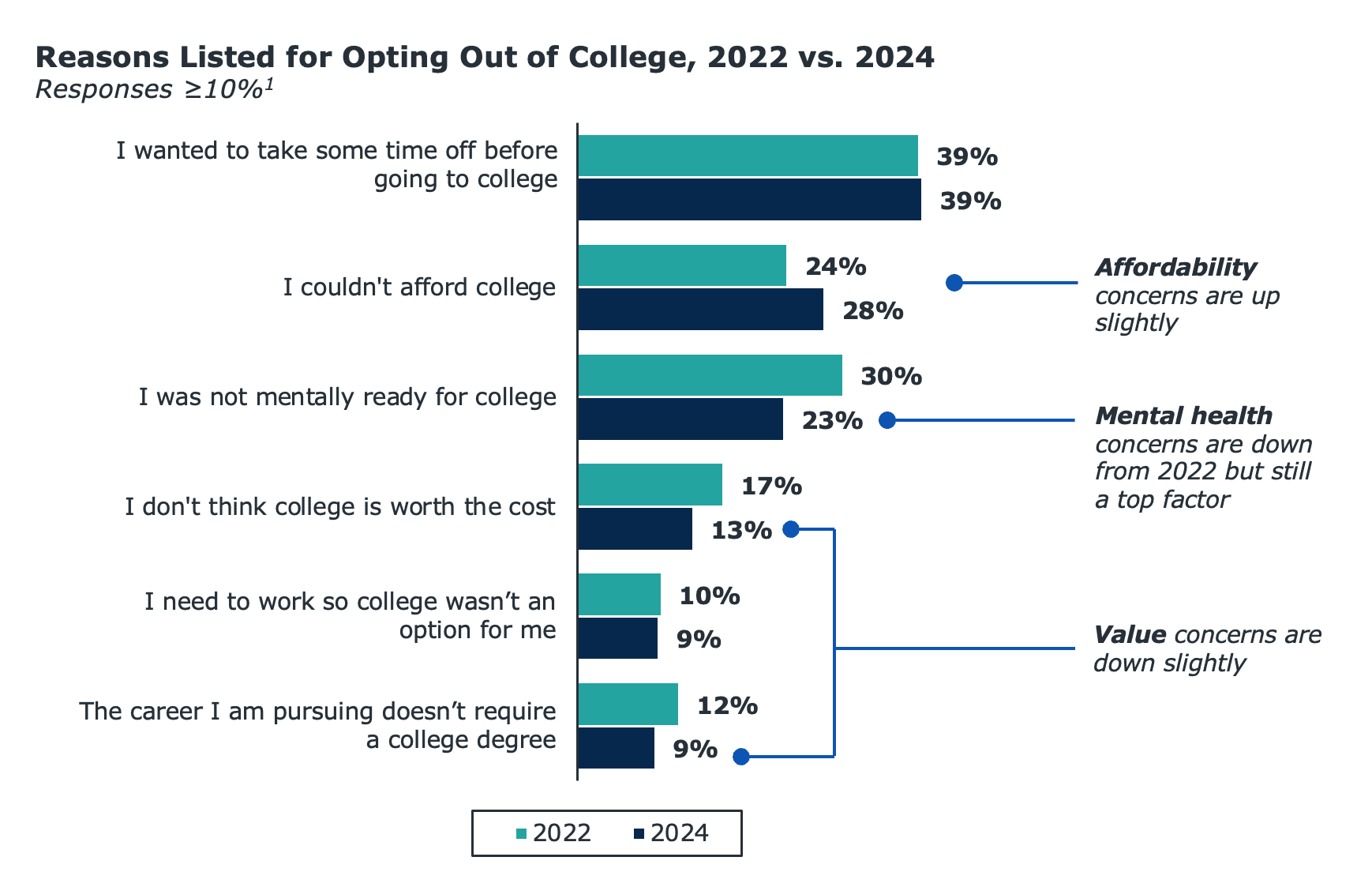
Among students attending college, financial concerns remain a primary factor in their choice of school. We found a four percentage-point increase in the share of students enrolling in two-year rather than four-year institutions since 2022, with “affordable tuition” as students’ top reason for attending a two-year institution.
Among students attending four-year institutions, location was the most cited reason, followed by financial aid and affordable tuition. Value factors including job preparation also ranked highly, with 30% of students listing “opportunities for internships or other experiential learning” and 28% listing “demonstrated job success for graduates.” Lower-income students were most likely to cite affordability concerns, while higher-income students were more likely to name career preparation or value concerns.
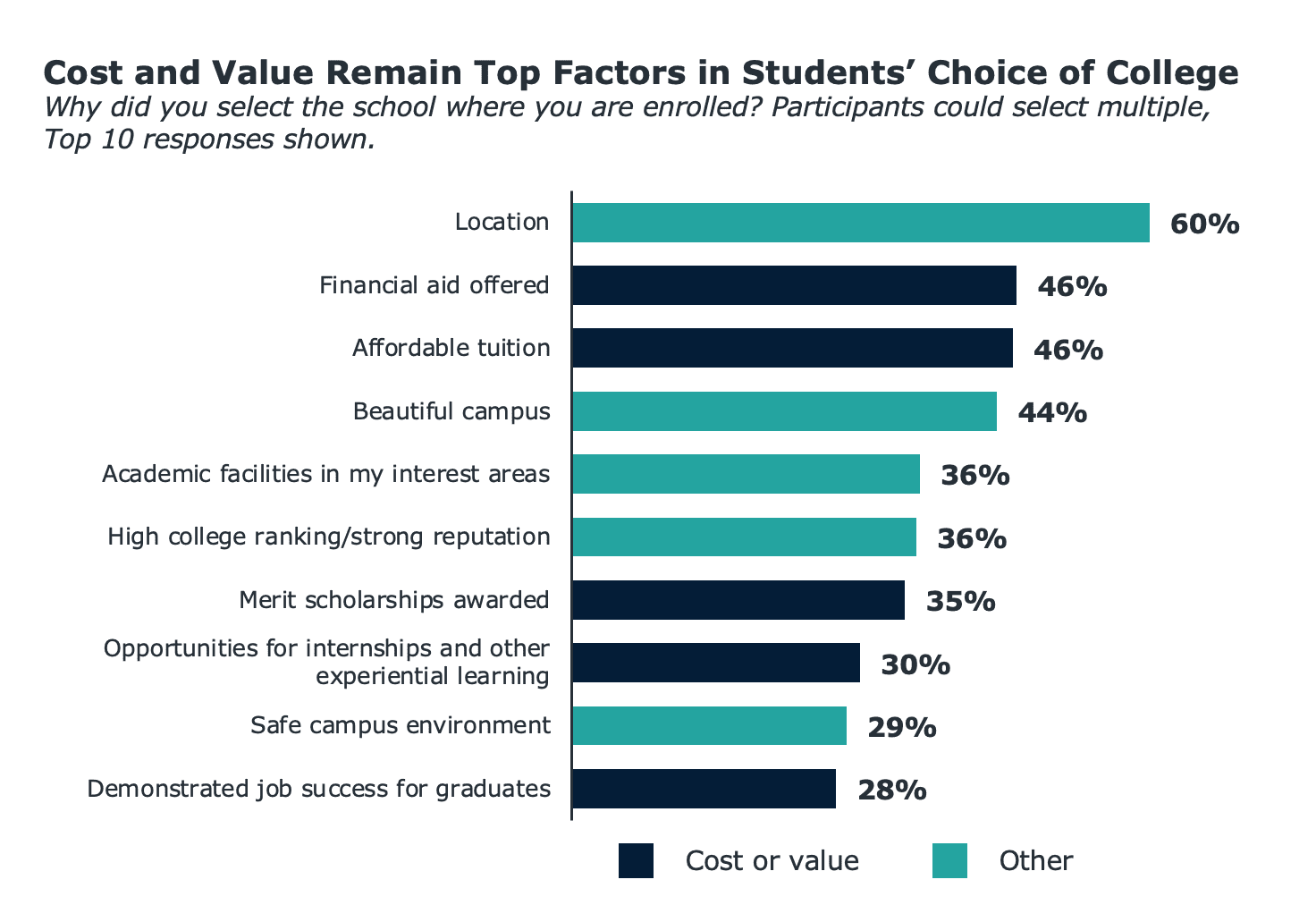
Watch Our Webinar: Navigating the New FAFSA
Takeaways for Recruitment Strategy
So, what does all this mean for your enrollment marketing? Here are a few ways to adapt your approach to better meet the needs of today’s students:
- Strengthen your value proposition by marketing your mental health and support services. EAB research has shown that students view support services as an indicator of value, and an array of mental health supports is a competitive advantage in today’s market. Highlight these offerings in your email, web, Appily, and social media campaigns to make your institution stand out.
- Feature a variety of student voices. To help alleviate prospective students’ concerns about belonging, ensure that your promotional materials feature real students from a variety of backgrounds.
- Take advantage of opportunities to reengage prospects after high school. With a growing share of students taking time off before college or starting college at two-year institutions, focus efforts on rerecruiting prospects who may still be interested in enrolling at your school.
As you strategize for the rest of 2024 and beyond, I hope you find these recommendations helpful, and I encourage you to check out our full report for more insights from our survey.

More Blogs

What enrollment leaders can learn from Alabama’s statewide direct admissions program

Is your yield rate okay?
